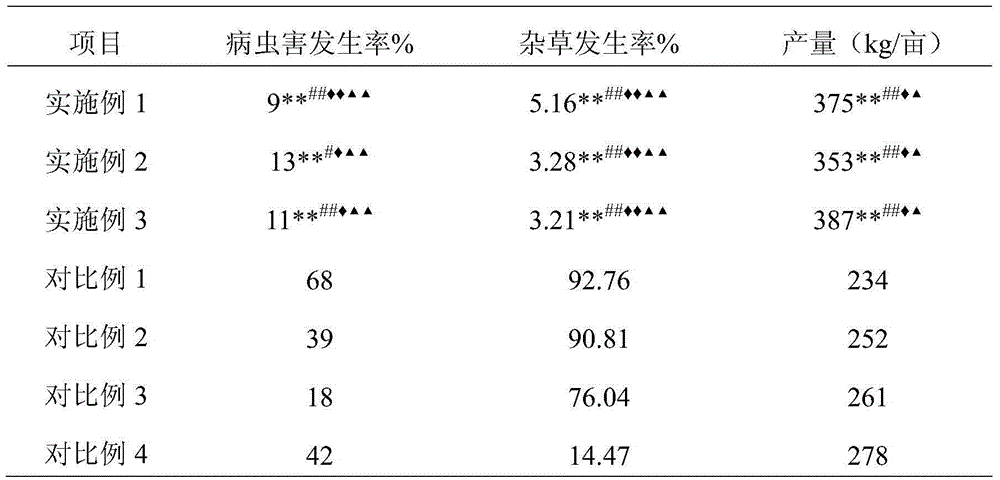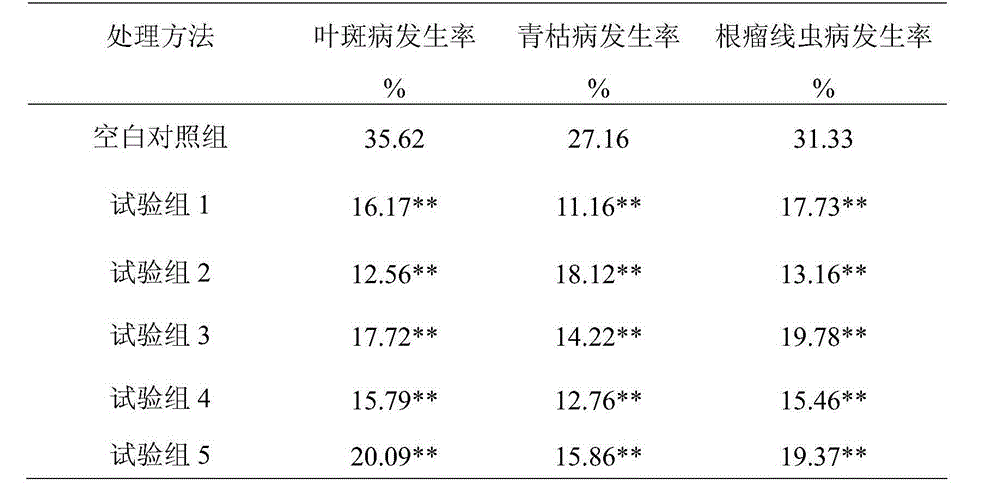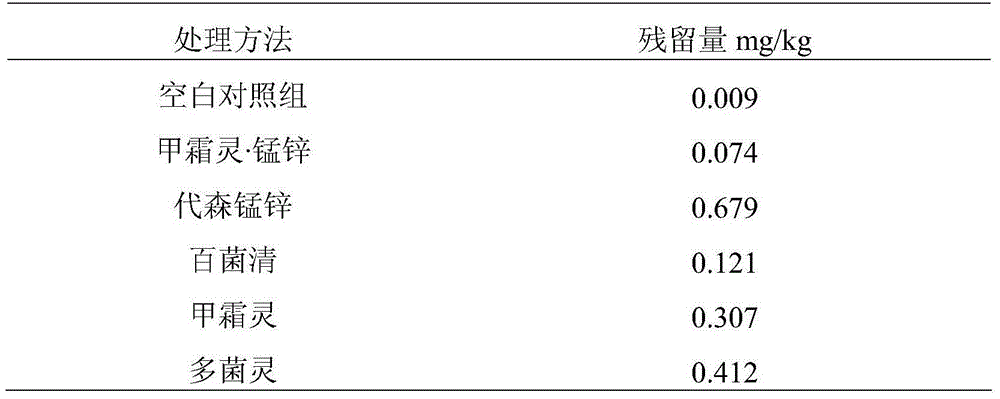Control methods for planting diseases and insect pests of bitter scrophulariaceae
A technology of diseases and insect pests and bitter scrophulariae, which is applied in the field of disease and insect pest control during the planting of bitter scrophulariae, can solve the problems of high pesticide residues, easy to produce phytotoxicity, and pollute the environment, so as to maintain soil moisture, facilitate the root system to absorb mineral elements, The effect of increasing production
- Summary
- Abstract
- Description
- Claims
- Application Information
AI Technical Summary
Problems solved by technology
Method used
Image
Examples
Embodiment 1
[0026] 1) Soil preparation: On a sunny day in early spring, plow the planting plot to a depth of about 30cm. It is required to rake deep and finely to level the land and pick out weeds, stones and other sundries. After being exposed to the sun for 10 days on a sunny day, the furrow width is 1500mm, the width of the drainage ditch is 200-250mm, and the depth of the drainage ditch is 200mm;
[0027] 2) Lime treatment: Take 70kg of quicklime and crush it, pass through a 30-mesh sieve, mix the quicklime powder and herbicide evenly, the ratio of lime to herbicide is: add 2g of herbicide for every 10kg of quicklime;
[0028] 3) Liming: Spread the lime mixture evenly into the soil of the plow layer, mix the quicklime with the soil at a depth of 5 cm on the surface, and spray it on the furrow surface with a small amount of water. It is advisable to keep the surface soil moist;
[0029] 4) Covering with black film: Cover the furrow surface with a black film with a width of 2 meters and...
Embodiment 2
[0032] 1) Soil preparation: On a sunny day in early spring, plow the planting plot to a depth of about 30cm. It is required to rake deep and finely to level the land and pick out weeds, stones and other sundries. After being exposed to the sun for 8 days on a sunny day, the furrow width is 1500mm, the width of the drainage ditch is 200-250mm, and the depth of the drainage ditch is 200mm;
[0033] 2) Lime treatment: Take 50kg of quicklime and crush it, pass through a 30-mesh sieve, mix the quicklime powder and herbicide evenly, the ratio of lime to herbicide is: add 10g of herbicide for every 10kg of quicklime;
[0034] 3) Liming: Spread the lime mixture evenly into the soil of the plow layer, mix the quicklime with the soil 10 cm deep on the surface, and spray it on the furrow surface with a small amount of water. It is advisable that the surface soil is moist;
[0035] 4) Covering with black film: Cover the furrow surface with a black film with a width of 2 meters and a thick...
Embodiment 3
[0038] 1) Soil preparation: On a sunny day in early spring, plow the planting plot to a depth of about 30cm. It is required to rake deep and finely to level the land and pick out weeds, stones and other sundries. After being exposed to the sun for 6 days on a sunny day, the furrow width is 1500mm, the width of the drainage ditch is 200-250mm, and the depth of the drainage ditch is 200mm;
[0039] 2) Lime treatment: Take 110kg of quicklime and crush it, pass through a 30-mesh sieve, mix the quicklime powder and herbicide evenly, the ratio of lime to herbicide is: add 5g of herbicide per 10kg of quicklime;
[0040] 3) Liming: Spread the lime mixture evenly into the soil of the plow layer, mix the quicklime with the soil at a depth of 8 cm on the surface, and spray it on the furrow surface with a small amount of water. It is advisable for the surface soil to be moist;
[0041] 4) Covering with black film: Cover the furrow surface with a black film with a width of 2 meters and a t...
PUM
 Login to View More
Login to View More Abstract
Description
Claims
Application Information
 Login to View More
Login to View More - R&D
- Intellectual Property
- Life Sciences
- Materials
- Tech Scout
- Unparalleled Data Quality
- Higher Quality Content
- 60% Fewer Hallucinations
Browse by: Latest US Patents, China's latest patents, Technical Efficacy Thesaurus, Application Domain, Technology Topic, Popular Technical Reports.
© 2025 PatSnap. All rights reserved.Legal|Privacy policy|Modern Slavery Act Transparency Statement|Sitemap|About US| Contact US: help@patsnap.com



